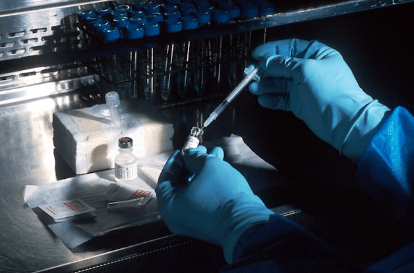
Marketing treatments for rare diseases presents a unique set of challenges and opportunities. Rare diseases, also known as orphan diseases, affect a small percentage of the population, often leaving pharmaceutical companies with limited markets for their therapies. Despite this, the development of treatments for these diseases is crucial, as they can significantly improve the quality of life for affected individuals. Fabio Lanzieri of Fort Lauderdale explores the distinctive challenges and effective strategies for marketing rare disease therapies.
Limited Patient Population
Rare diseases typically affect fewer than 1 in 10 people in the United States. This small patient pool makes it challenging for pharmaceutical companies to recover research and development costs, let alone turn a profit. As a result, traditional mass marketing approaches are often impractical and ineffective.
High Development Costs
The cost of developing therapies for rare diseases is often exorbitant. Clinical trials for these therapies can be particularly complex and expensive due to the need for specialized patient recruitment and the rarity of the condition.
Regulatory Hurdles
Obtaining regulatory approval for rare disease therapies can be challenging. The limited patient population often results in smaller clinical trial sizes, which can complicate the demonstration of a drug’s efficacy and safety to regulatory bodies.
Lack of Awareness
Awareness of rare diseases among healthcare professionals and the general public is often low. This lack of awareness can hinder diagnosis and treatment, making it difficult for pharmaceutical companies to reach their target audience.
Effective Marketing Strategies
Despite these challenges, there are several strategies that pharmaceutical companies can employ to successfully market therapies for rare diseases.
Patient-Centric Approach
A patient-centric approach is crucial in the rare disease space. Pharmaceutical companies should engage directly with patients and patient advocacy groups to understand their needs and challenges. This engagement can provide valuable insights that inform the development and marketing of therapies. Creating educational materials, supporting patient communities, and involving patients in clinical trial design are all ways to demonstrate commitment to the patient community.

Targeted Communication
Given the small and specific target audience, highly targeted communication strategies are essential. Companies should use data analytics to identify and reach patients, healthcare providers, and caregivers who are most likely to benefit from the therapy. Personalized communication through channels such as social media, patient forums, and targeted advertising can be highly effective.
Collaboration with Healthcare Professionals
Building strong relationships with healthcare professionals (HCPs) who specialize in rare diseases is critical. These specialists can serve as key opinion leaders (KOLs) and advocates for the therapy. Providing HCPs with detailed information about the therapy, including clinical trial results and patient case studies, can help them understand the benefits and recommend it to their patients.
Educational Initiatives
Increasing awareness and knowledge about rare diseases and available treatments is vital. Pharmaceutical companies can sponsor educational initiatives such as webinars, conferences, and workshops for healthcare professionals. Additionally, creating educational content for patients and caregivers can help improve diagnosis and treatment rates.
Leveraging Digital Platforms
Digital platforms offer powerful tools for reaching niche audiences. Companies can use social media, websites, and online forums to connect with patients and healthcare providers. Creating engaging and informative digital content, such as videos, infographics, and interactive tools, can help convey complex medical information in an accessible way.
Orphan Drug Designation and Incentives
Seeking orphan drug designation from regulatory bodies can provide significant benefits, including market exclusivity, tax credits, and grants. These incentives can help offset the high costs of developing and marketing rare disease therapies.
Real-World Evidence and Patient Stories
Collecting and sharing real-world evidence (RWE) and patient stories can be incredibly powerful. RWE can provide additional data on the therapy’s effectiveness and safety in a broader patient population. Patient stories humanize the impact of the therapy and can resonate deeply with other patients, caregivers, and healthcare providers.
Conclusion
Marketing therapies for rare diseases requires a specialized approach that addresses the unique challenges of this field. By adopting patient-centric strategies, leveraging targeted communication, collaborating with healthcare professionals, and utilizing digital platforms, pharmaceutical companies can effectively reach and engage their niche audiences. Additionally, seeking orphan drug designation and sharing real-world evidence and patient stories can further support marketing efforts. Ultimately, these strategies not only help in marketing the therapies but also play a crucial role in improving the lives of individuals affected by rare diseases.